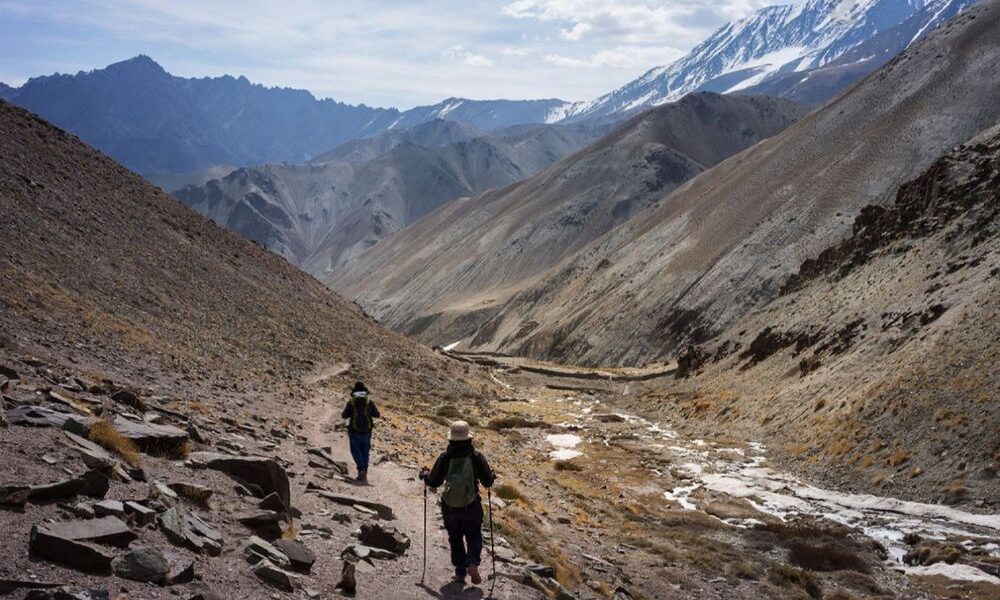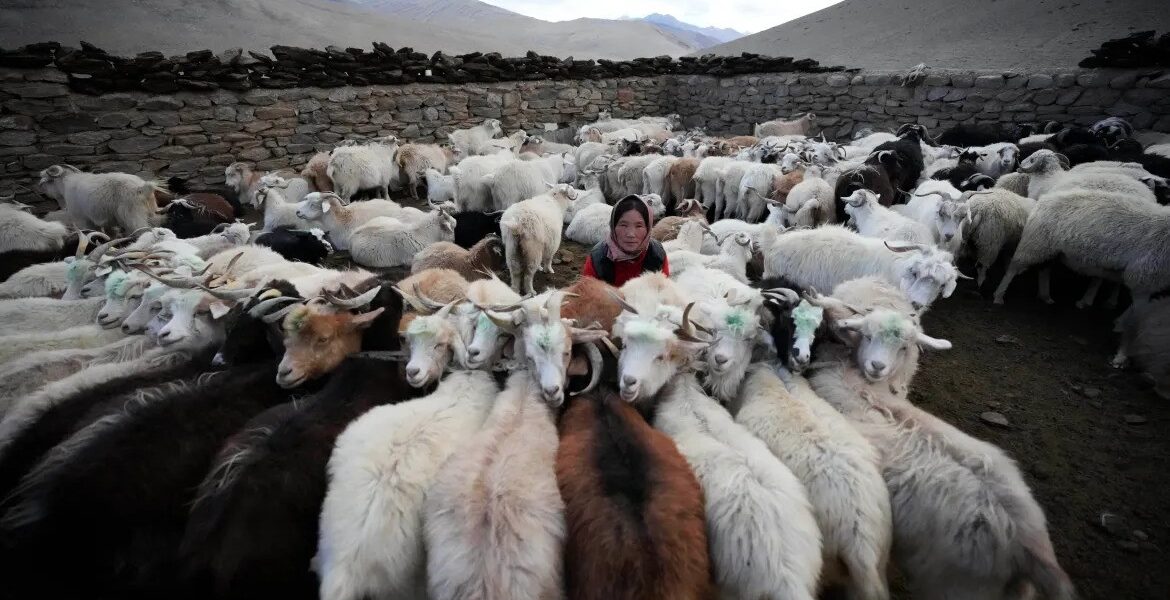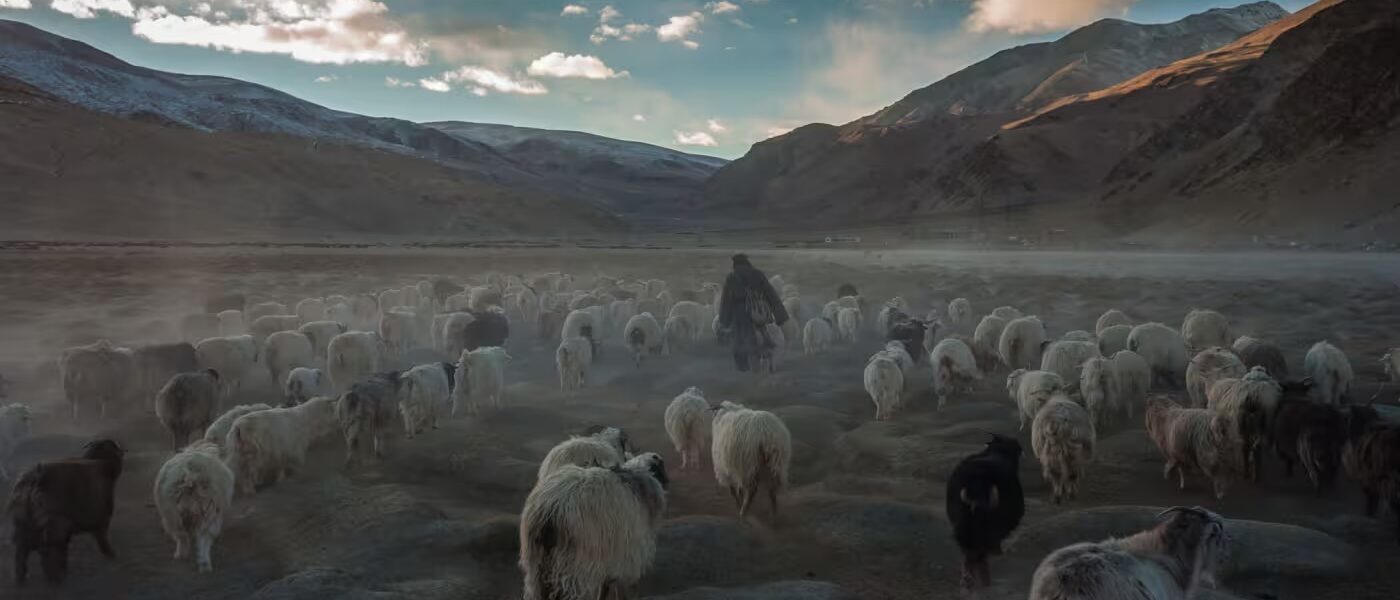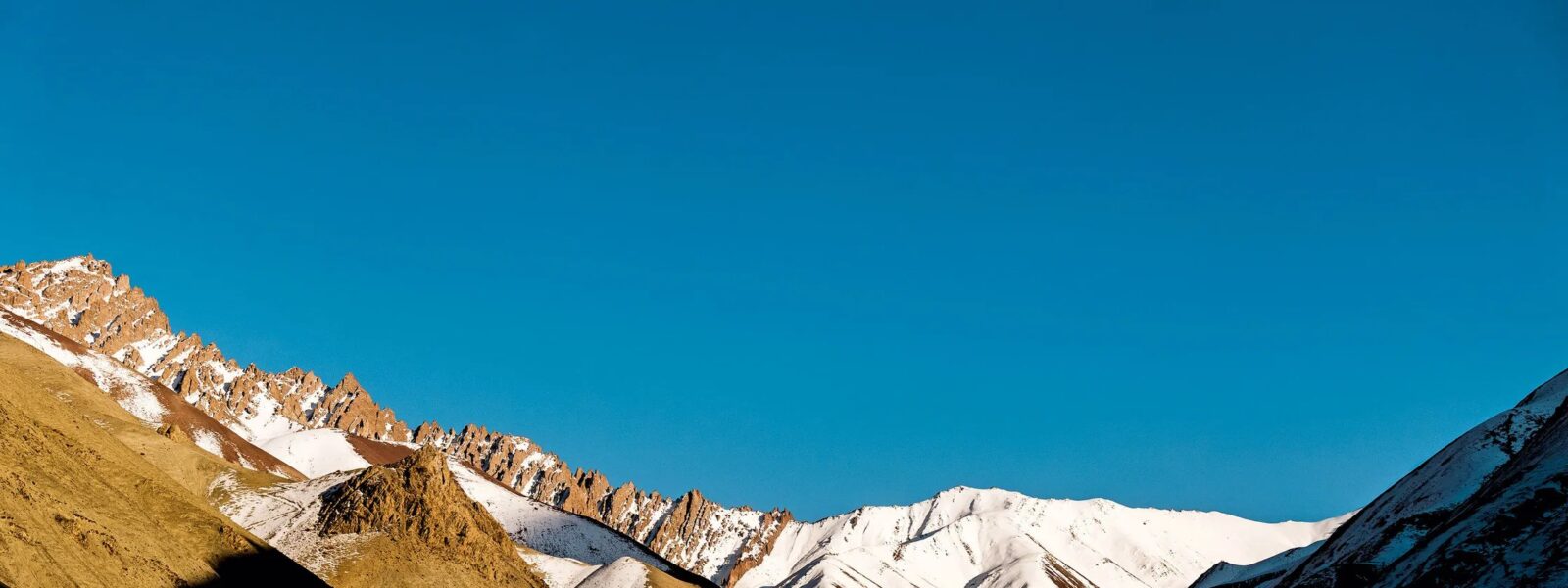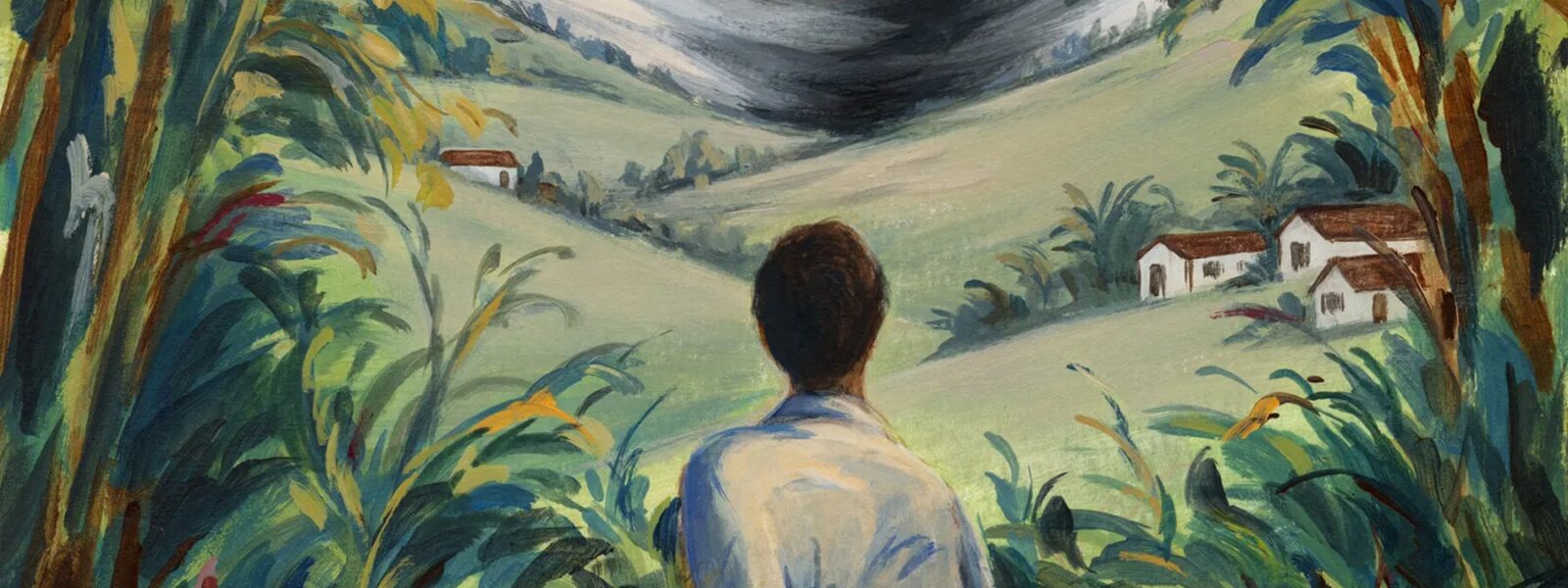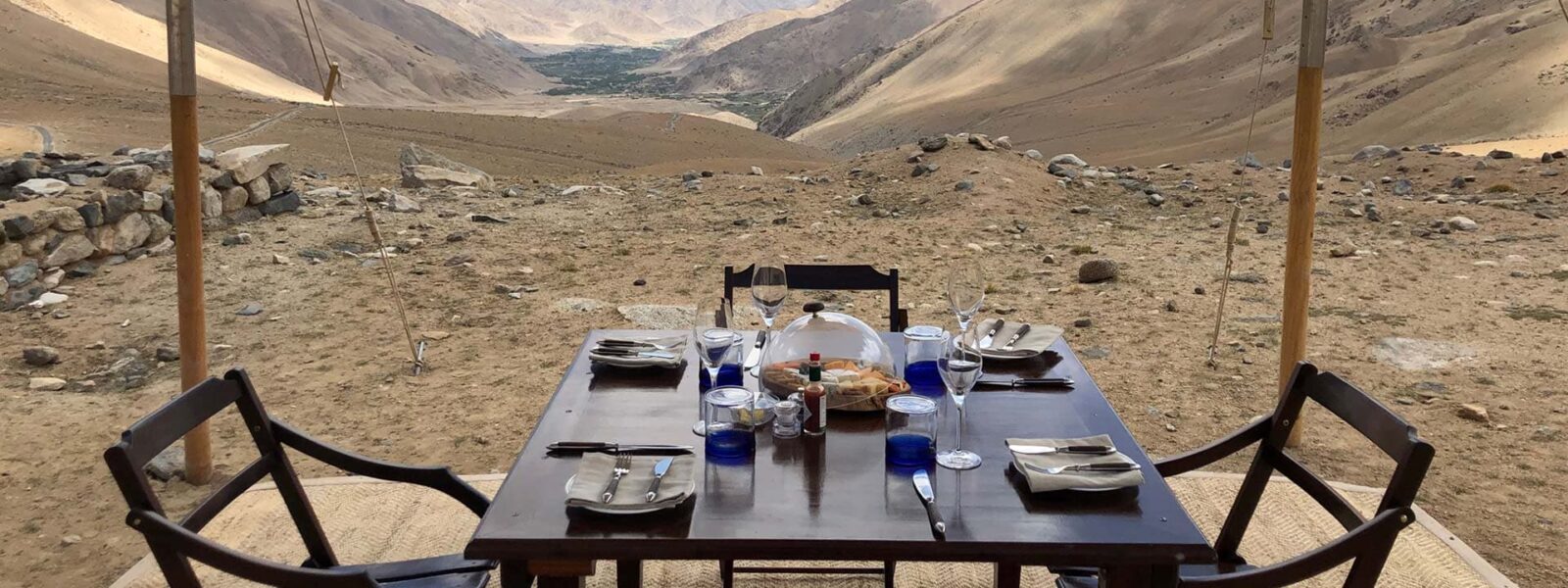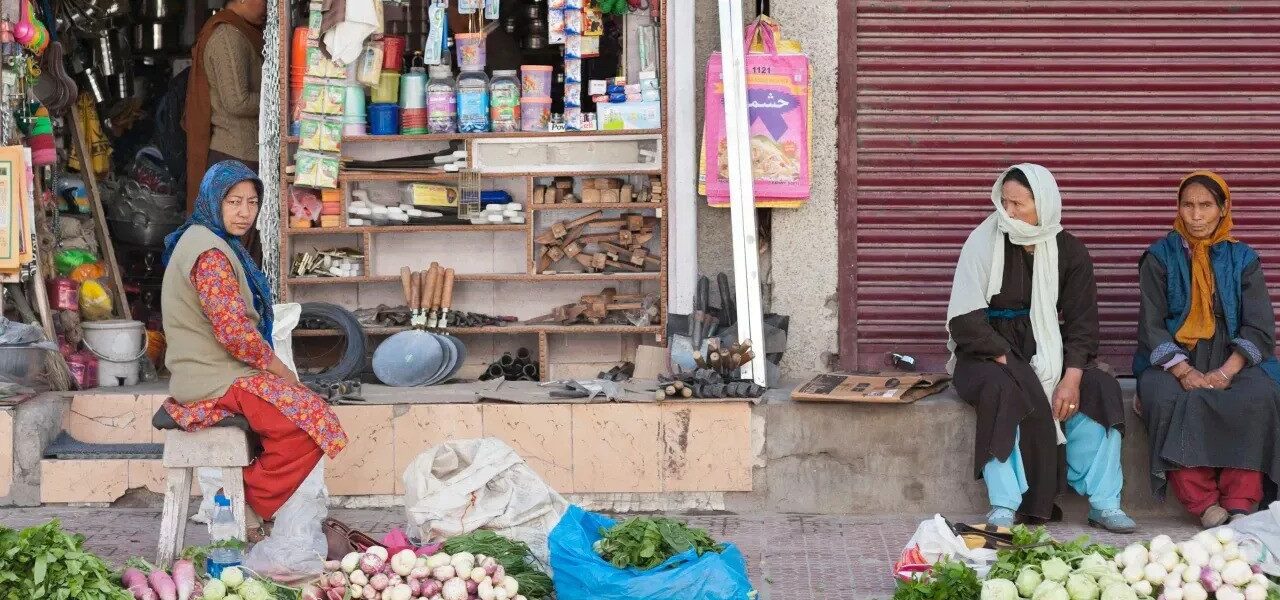Why Trek in Ladakh?
Ladakh is not just a destination—it’s a revelation. Hidden in the northernmost folds of the Indian Himalayas, this high-altitude desert is a place where silence speaks, mountains breathe, and every path tells a story. For trekkers seeking a raw, soul-stirring adventure in 2025, Ladakh offers more than just scenic trails. It offers a transformative journey through some of the most stunning and surreal landscapes on Earth.
Surrounded by the Karakoram and Zanskar ranges, Ladakh presents a terrain of stark beauty—windswept valleys, ancient glacial rivers, remote villages clinging to cliffs, and high passes that touch the sky. Every footstep taken in Ladakh carries you across terrains sculpted by time and silence. Whether you’re walking through the sun-baked trails of Sham Valley or tracing the frozen path of the Chadar Trek, the experience is both meditative and exhilarating.
One of the greatest draws of trekking in Ladakh is its cultural richness. Unlike the well-trodden Himalayan trails elsewhere, the routes here pass through centuries-old Buddhist monasteries, whitewashed stupas, and vibrant prayer flags fluttering against cobalt skies. Villages like Markha, Umlung, and Rumbak are not just pit stops—they are living museums of Himalayan life. You’ll be welcomed into traditional homes, share butter tea with locals, and witness rituals that have remained unchanged for generations.
Ladakh also offers unmatched altitude variety. From lower-altitude beginner trails in the Sham region to challenging high passes like Kongmaru La and Parang La, there’s something for every fitness level. And for those aiming higher, there’s the chance to trek near majestic peaks like Kang Yatse II and Dzo Jongo. These aren’t just physical journeys—they’re deeply personal ones.
In 2025, improved infrastructure, more environmentally conscious trekking practices, and better local support make this the ideal time to embark on a Ladakh trek. The routes are increasingly accessible, yet still hold their wild and remote charm. New trekking circuits and improved connectivity also allow you to customize your journey based on time, fitness, and interest.
Whether you’re a seasoned hiker looking for a remote Himalayan expedition or a beginner dreaming of high-altitude serenity, Ladakh welcomes you with open skies, vast silence, and trails that lead both outward and inward. The question isn’t why trek in Ladakh—it’s why not start now?

Best Time to Go Trekking in Ladakh
Choosing the right season can make or break your trekking experience in Ladakh. With altitudes ranging from 3,000 to over 6,000 meters, weather in Ladakh plays a major role in accessibility, safety, and overall enjoyment. In 2025, climate patterns are shifting slightly, but the core trekking windows remain the same—spring to early autumn, with specific months offering distinct advantages.
Spring and Early Summer (Mid-May to Early July)
This is the golden season for many classic Ladakh treks. The snow has melted on most lower-altitude trails like the Sham Valley and Lamayuru to Alchi route, making them fully accessible without the extreme cold. The air is fresh, the skies are vividly blue, and the valleys are dotted with wildflowers. Trekkers in this season can enjoy ideal conditions for routes such as the Markha Valley trek and early summer visits to Hemis National Park.
One of the main advantages of trekking in this window is that the crowds are still manageable. Roads to Nubra Valley and Tso Moriri typically open by late May, allowing for seamless travel logistics. This period also offers great opportunities for photography—think lush meadows backed by snow-capped peaks and streams brimming with glacier meltwater.
Peak Summer (Mid-July to Mid-August)
While much of India is under the grip of monsoon rains, Ladakh remains relatively dry due to its location in the rain shadow of the Himalayas. This is the high season for trekking, and popular routes like the Markha Valley, Kang Yatse II base camp, and even offbeat trails like Tso Moriri to Spiti see increased traffic.
Days are warm, nights are cool, and almost every trail is accessible. However, with high altitude and exposure to the sun, trekkers should be well-prepared with sun protection and hydration strategies. Accommodation—especially homestays in villages—can fill up quickly, so early booking is essential.
Late Summer to Autumn (Late August to Early October)
For those seeking solitude and stunning autumn colors, this period is perhaps the most rewarding. The trails are quieter, the light is golden, and the landscape transforms into a mix of amber, crimson, and gold. Treks such as Snow Leopard Trek, remote routes in the Zanskar region, and the high passes like Kongmaru La and Parang La are perfect during this time.
Although temperatures begin to drop in September, days remain trek-friendly, and skies are often clearer than in peak summer. This is also the ideal time for wildlife enthusiasts, with increased chances of spotting ibex, blue sheep, and even the elusive snow leopard.
Winter (November to March): Only for the Brave
Most trekking routes are closed due to snow and extreme cold, but this is when the legendary Chadar Trek comes to life. Walking over the frozen Zanskar River is an experience unlike any other, though it requires excellent physical conditioning and professional guides. Temperatures can plunge below -20°C, and preparation is key.
In summary, the best time to go trekking in Ladakh depends on the kind of experience you’re looking for. Whether you’re after blooming valleys in June, high-altitude challenges in August, or golden quietude in September, Ladakh has a season for every soul. Just remember—altitude, weather, and acclimatization are your constant companions here. Respect them, and the mountains will reward you.
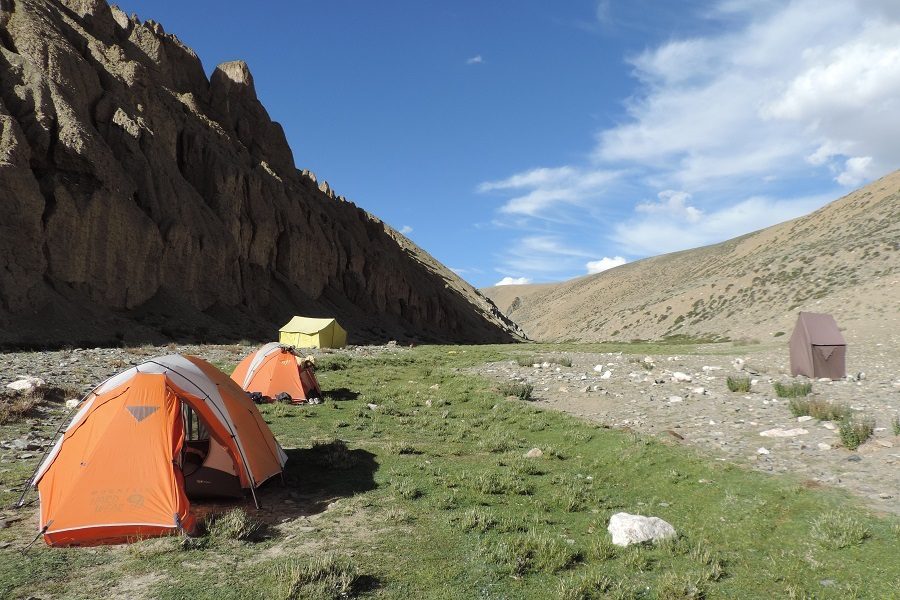
Top Treks in Ladakh for 2025
Ladakh is a dream destination for trekkers, with trails that cut through ancient valleys, climb high mountain passes, and connect remote villages steeped in timeless traditions. Whether you’re a seasoned adventurer or a curious beginner, the region offers a wide variety of trekking routes in 2025—each with its own charm, challenge, and story. Here are some of the best treks in Ladakh that promise unforgettable experiences.
Markha Valley Trek: A Himalayan Classic
Often considered the most iconic trek in Ladakh, the Markha Valley Trek is ideal for those seeking a perfect balance of natural beauty and cultural immersion. Spanning 6 to 8 days, this trail winds through picturesque villages like Hankar and Umlung, with nightly homestays offering a window into Ladakhi life. Along the way, trekkers cross the thrilling Kongmaru La pass at 5,200 meters, with panoramic views of Kang Yatse II.
This trek is moderately challenging and suitable for fit beginners who have acclimatized in Leh. It’s also one of the best treks in Ladakh for spotting wildlife like blue sheep, marmots, and golden eagles.
Sham Valley Trek: The Best Trek for Beginners
Known as the “Baby Trek,” the Sham Valley Trek is ideal for those new to trekking or short on time. Lasting 2 to 4 days, it connects charming villages like Likir, Yangthang, and Hemis Shukpachan. The terrain is gentle, the altitude manageable, and the cultural experiences deeply enriching.
This low-altitude trail is available from May to October and doesn’t require extensive preparation. You’ll walk through apricot orchards, pass ancient monasteries, and enjoy warm hospitality in family-run homestays. A perfect introduction to trekking in Ladakh.
Chadar Trek: Walking on the Frozen Zanskar River
For thrill-seekers, the Chadar Trek remains one of the most unique and extreme adventures in the Himalayas. Taking place between mid-January and mid-February, this winter expedition involves walking over the frozen Zanskar River. With temperatures dipping as low as -25°C, the trek is physically demanding and requires strong preparation and acclimatization.
Despite the cold, the rewards are immense—ice caves, surreal frozen waterfalls, and moments of stillness that feel otherworldly. It’s not for the faint-hearted, but for those who dare, the Chadar Trek is a story you’ll tell for a lifetime.
Snow Leopard Trek: Into the Wild of Hemis National Park
More than just a trek, this journey is a wildlife expedition. The Snow Leopard Trek in the Hemis region is perfect for nature lovers and photographers eager to spot rare Himalayan fauna in their natural habitat. Best attempted between January and March, this trek offers a real chance to glimpse the elusive snow leopard, as well as ibex, foxes, and countless birds.
Local trackers and experienced guides lead the way, and you’ll spend your nights in homestays or heated wildlife camps. This is a slower-paced trek, focused more on patience and observation than altitude gain, but it’s one of the most unforgettable journeys in Ladakh.
Tso Moriri to Spiti Valley Trek: Remote, Rugged, and Wild
For experienced trekkers seeking solitude and adventure, the Tso Moriri to Spiti route is a dream come true. This multi-day trek crosses the high-altitude Rupshu plateau, passes through nomadic Changpa settlements, and ventures into the untouched wilderness between Ladakh and Himachal Pradesh.
The altitude remains consistently above 4,500 meters, and the terrain is harsh and unmarked—making it suitable only for seasoned hikers with prior acclimatization. The reward? Raw, remote beauty, dramatic skies, and a sense of being entirely off the map.
Lamayuru to Alchi Trek: Walk Through the Land of Monasteries
Short, scenic, and packed with cultural treasures, the Lamayuru to Alchi Trek is an excellent moderate-level trail for trekkers with a week in hand. Starting from the moonlike landscape of Lamayuru, this route takes you across rivers, over small passes, and through some of Ladakh’s oldest Buddhist settlements.
The trek combines striking geology with sacred heritage. Alchi Monastery, your endpoint, is a UNESCO-protected site filled with rare frescoes and centuries-old art. This trek is perfect for travelers who want to blend walking with meaningful encounters and ancient history.
These top treks in Ladakh reflect just a fraction of what this magical region offers. Whether you’re chasing high passes or quiet valleys, every trail here leads to something greater than the summit—it leads to perspective, connection, and discovery.

Trekking Routes and Difficulty Levels
One of the most common questions from aspiring trekkers is: “Which Ladakh trek is right for me?” With routes ranging from short, gentle valley walks to multi-week high-altitude expeditions, Ladakh offers something for everyone. Understanding the difficulty levels, terrain, and elevation gain is key to choosing a route that aligns with your fitness, experience, and comfort zone.
Easy Treks: Gentle Trails for Beginners
If you’re new to trekking or simply looking for a relaxed, culturally immersive experience, Ladakh has several easy treks that offer rich rewards without demanding exertion. These trails typically stay below 4,000 meters and involve 3–5 hours of walking per day on moderate inclines.
The most popular option is the Sham Valley Trek, also known as the “Baby Trek.” It connects traditional villages such as Likir, Yangthang, and Hemis Shukpachan, with opportunities to stay in local homestays and visit centuries-old monasteries. There’s minimal altitude risk, and the trek can be done in 2–4 days.
Another beginner-friendly route is the Lamayuru to Alchi trek, where you walk through the “Moonland” terrain of western Ladakh. It’s a spiritual and scenic trail that balances culture and nature, perfect for those easing into the world of Himalayan hiking.
Moderate Treks: For Fit and Acclimatized Trekkers
Moderate treks in Ladakh demand a higher level of stamina and some acclimatization. These trails usually involve 6–8 hours of walking per day and cross high passes above 4,500 meters. Treks in this category are well-suited for active travelers with prior trekking experience at moderate altitude.
The Markha Valley Trek is the gold standard here. While it’s not technically difficult, it does require crossing the 5,200-meter Kongmaru La pass and walking through long stretches of open landscape. Staying in homestays allows for lighter packs, and the steady altitude gain helps with acclimatization.
The Snow Leopard Trek in Hemis National Park is also moderate in terms of distance and elevation, but challenging due to cold conditions and slow pacing. It’s more of a nature immersion trek, perfect for those with patience and a love for wildlife.
Difficult Treks: High-Altitude Expeditions for the Experienced
These are the treks that test your endurance, mental strength, and wilderness survival instincts. Difficult treks in Ladakh often involve long days (8–10 hours), camping at altitudes above 4,500 meters, and crossing multiple high passes in remote terrain.
The Tso Moriri to Spiti trek is a prime example. It spans over a week through isolated landscapes with no mobile signal, limited human contact, and wild camping every night. Navigation can be tricky, and weather conditions can change rapidly. This is not a trek for first-timers—but for experienced trekkers, it’s a life-defining journey.
Another demanding route is the Rumtse to Tso Moriri trek, crossing several passes above 5,000 meters. The rewards are immense—uninterrupted Himalayan skylines, encounters with nomadic Changpa herders, and pristine alpine lakes—but so are the risks if underprepared.
How to Choose the Right Trek for You
Choosing the right trekking route in Ladakh depends on a few essential factors: your altitude experience, fitness level, the number of days you have, and the kind of experience you’re after—whether it’s culture, solitude, wildlife, or high-mountain drama.
- New to trekking? Start with Sham Valley or Lamayuru to Alchi.
- Looking for a balance of challenge and culture? Choose the Markha Valley trek.
- Seeking wilderness and solitude? Go for Tso Moriri to Spiti or Rumtse to Tso Moriri.
Trekking in Ladakh is not a one-size-fits-all adventure. But with the right preparation and route selection, it can be an incredibly rewarding and life-affirming experience—no matter what trail you choose.
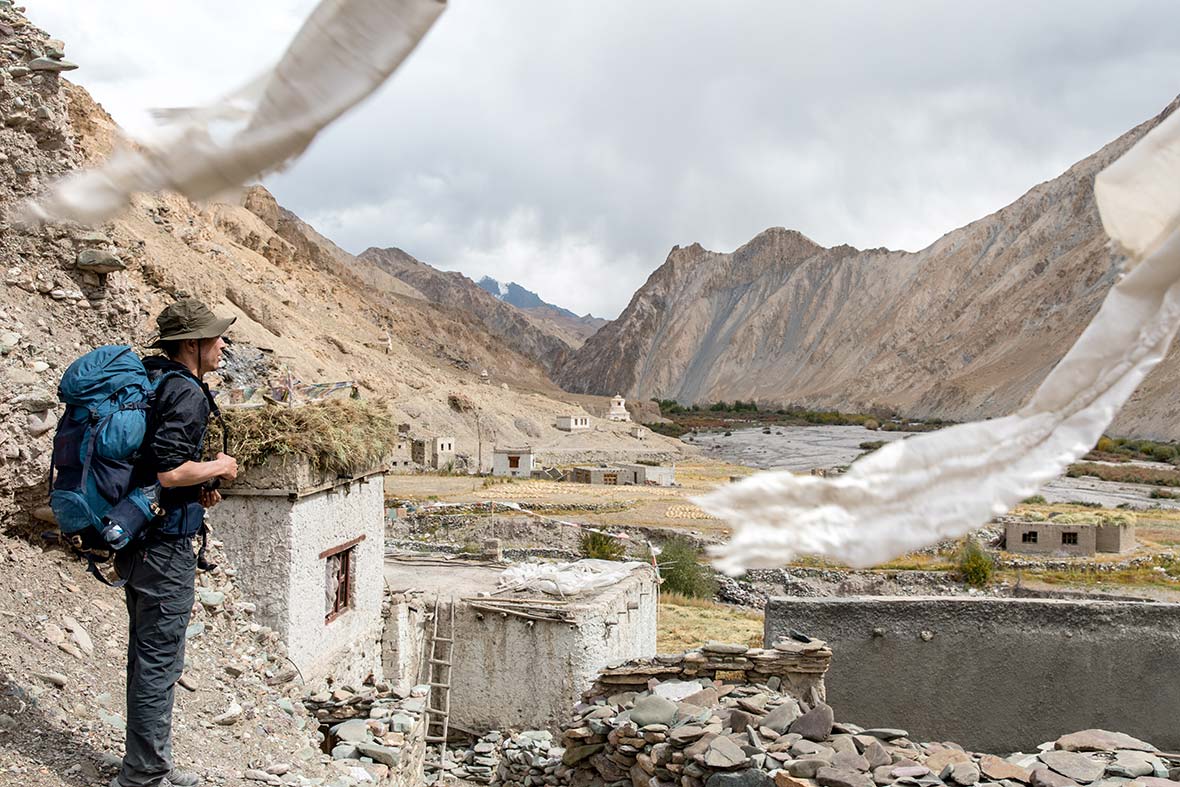
Altitude Tips and Acclimatization Advice
At elevations between 3,000 and 6,000 meters, Ladakh is one of the highest inhabited regions on the planet—and that makes acclimatization not just important, but essential. Whether you’re doing an easy valley walk or heading into high passes, understanding how altitude affects your body is the first step toward a safe and enjoyable trek.
Altitude sickness, also known as Acute Mountain Sickness (AMS), is a real concern for travelers flying into Leh (3,500m) and immediately starting physical activity. Headaches, nausea, fatigue, and loss of appetite are common symptoms that can progress quickly if not addressed. But with proper planning and awareness, AMS is avoidable in most cases.
Plan for Acclimatization Before You Trek
The single most effective strategy is to build buffer days into your itinerary. Upon arrival in Leh, you should rest for at least 48 hours before beginning any high-altitude trekking. Avoid strenuous activity, drink plenty of water, and allow your body to adapt to the thinner air.
During these first days, consider short acclimatization hikes to nearby places like Shanti Stupa, Leh Palace, or the small Gompas on the outskirts of town. These walks are gentle yet beneficial for slowly increasing your oxygen efficiency.
Climb High, Sleep Low
One of the golden rules of high-altitude trekking is “climb high, sleep low.” This means you can ascend to higher elevations during the day but should descend to a lower altitude to spend the night. This technique helps your body adjust without being overwhelmed.
Many Ladakh trekking routes naturally follow this principle—like the Markha Valley trek, where altitude gain is gradual and daily sleeping elevations are well spaced.
Hydration and Nutrition
Drinking plenty of water is crucial. At higher altitudes, your body dehydrates more quickly due to dry air and increased respiratory rate. Aim for 3 to 4 liters per day, even if you don’t feel thirsty. Electrolytes, soups, and warm teas can also help maintain hydration and warmth.
High-energy, easily digestible foods are ideal—think dried fruits, nuts, energy bars, and local dishes like thukpa and tsampa. Avoid alcohol, caffeine, and smoking during your acclimatization period, as they can hinder oxygen absorption.
Medications and Safety Precautions
Many trekkers choose to carry Diamox (acetazolamide), a medication that can help prevent or reduce the symptoms of AMS. It’s best to consult a doctor before your trip, especially if you have pre-existing health conditions.
Oxygen levels decrease significantly above 4,000 meters. Pulse oximeters can be useful tools for group leaders to monitor oxygen saturation. If someone’s readings drop too low or if symptoms worsen, the best solution is immediate descent. Ladakh’s remote nature means evacuation can take time—prevention is your best medicine.
Signs You Should Not Ignore
If you or a member of your group experiences confusion, breathlessness at rest, inability to walk in a straight line, or a severe persistent headache, seek help immediately. These could be signs of HAPE (High Altitude Pulmonary Edema) or HACE (High Altitude Cerebral Edema), both of which are life-threatening and require urgent descent and medical care.
In conclusion, high-altitude trekking in Ladakh is an exhilarating challenge, but it demands respect for the environment and your own body. With proper acclimatization, hydration, and pacing, you’ll be well on your way to safely exploring the majestic heights of this Himalayan wonderland.
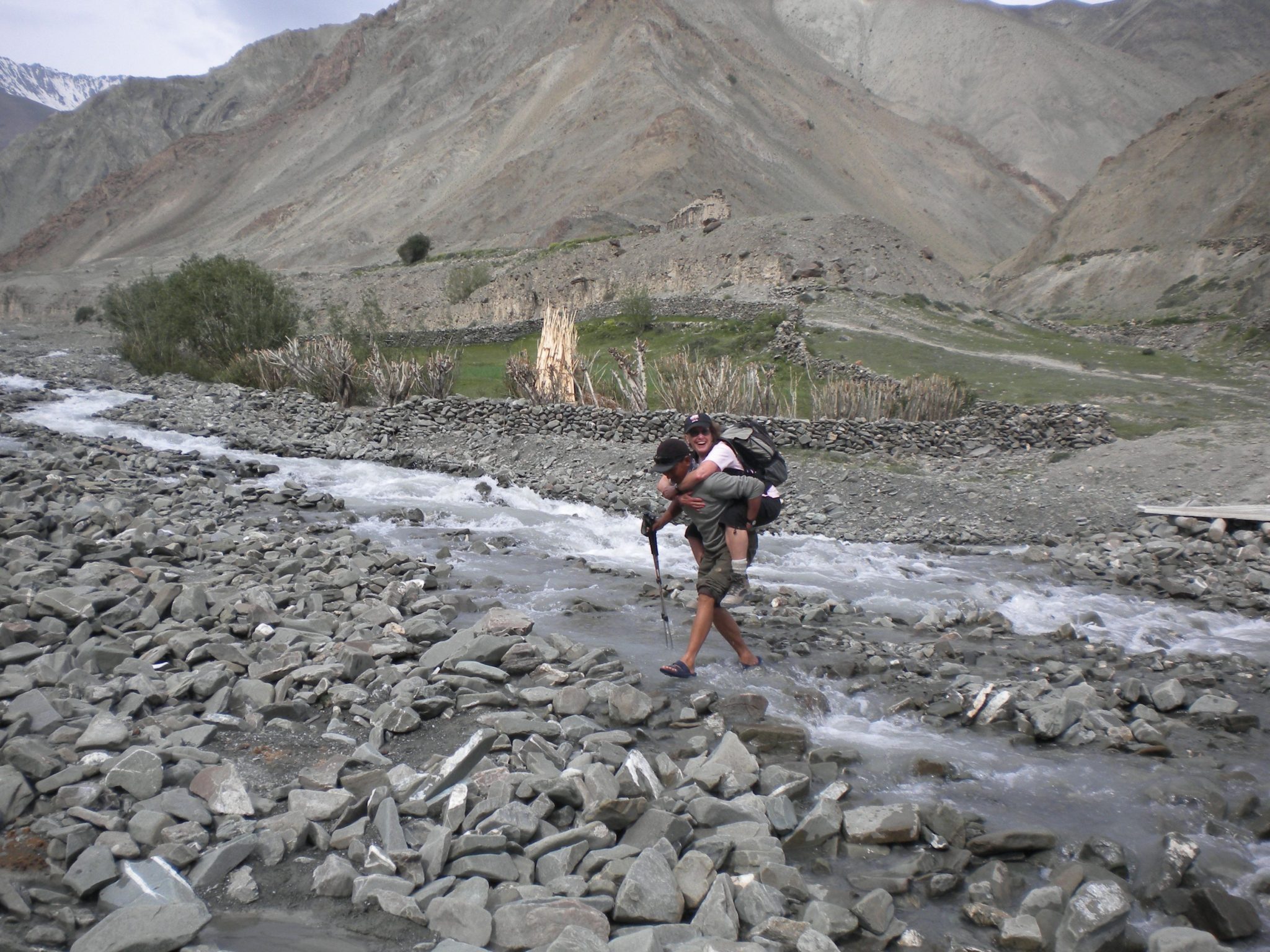
What to Pack for a Ladakh Trek
Proper preparation is half the trek. Whether you’re heading into the high passes of the Markha Valley or embarking on a winter expedition like the Chadar Trek, packing the right gear is critical to both your comfort and safety. In Ladakh’s harsh, high-altitude climate, having the right items can mean the difference between an unforgettable adventure and an unnecessary struggle.
Clothing: Layering Is the Key
Ladakh’s weather can shift dramatically—from warm afternoons to sub-zero nights—even in summer. The best strategy is to dress in layers that can be added or removed as needed. Here’s a breakdown of essential clothing:
- Base layer: Moisture-wicking thermal tops and bottoms
- Mid layer: Insulated fleece or down jacket
- Outer shell: Waterproof and windproof jacket and pants
- Trekking pants: Quick-dry, breathable material
- Innerwear & socks: Multiple pairs, preferably merino wool
- Gloves, hat, and neck gaiter: For warmth and sun protection
- Sun hat or cap: Essential at high altitudes to prevent sunstroke
Even in summer months, night temperatures can drop below freezing at higher altitudes. Make sure your layers are adequate for temperatures as low as -5°C or even lower if you’re camping.
Footwear: Your Most Important Investment
A sturdy, well-broken-in pair of trekking boots is absolutely essential. Look for waterproof boots with ankle support and good grip. Avoid new boots on the trail—test them thoroughly in advance. Bring along lightweight sandals or camp shoes for evenings and stream crossings.
Essential Gear Checklist
This list applies to most Ladakh treks and can be adjusted based on the specific route and season:
- Backpack (40–60L) with rain cover
- Daypack (20L) for short hikes and valuables
- Sleeping bag (rated -10°C or better)
- Trekking poles (especially helpful for descents and high passes)
- Headlamp with extra batteries
- Reusable water bottles (2L total capacity)
- Water purification tablets or filter
- Quick-dry towel and basic toiletries
- Sunscreen (SPF 50+), lip balm, and sunglasses
- Basic first aid kit and any personal medication
Optional but Useful Items
These aren’t mandatory, but many trekkers find them useful:
- Camera or phone with extra battery bank
- Earplugs for noisy camps or windy nights
- Notebook or journal to capture the journey
- Lightweight book or e-reader
- Small dry bag for electronics and documents
Rent or Bring?
In Leh, you’ll find several shops offering trekking equipment on rent—from sleeping bags and down jackets to tents and crampons (for winter treks). If you’re on a tight budget or short trip, renting can be a cost-effective option. However, for multi-day or high-altitude treks, it’s best to bring your own trusted gear, especially shoes, backpacks, and base layers.
Preparing for a trek in Ladakh isn’t about packing more—it’s about packing smart. Aim for functionality, durability, and comfort. With the right equipment, your focus can remain where it should be—on the landscapes, the silence, and the journey itself.
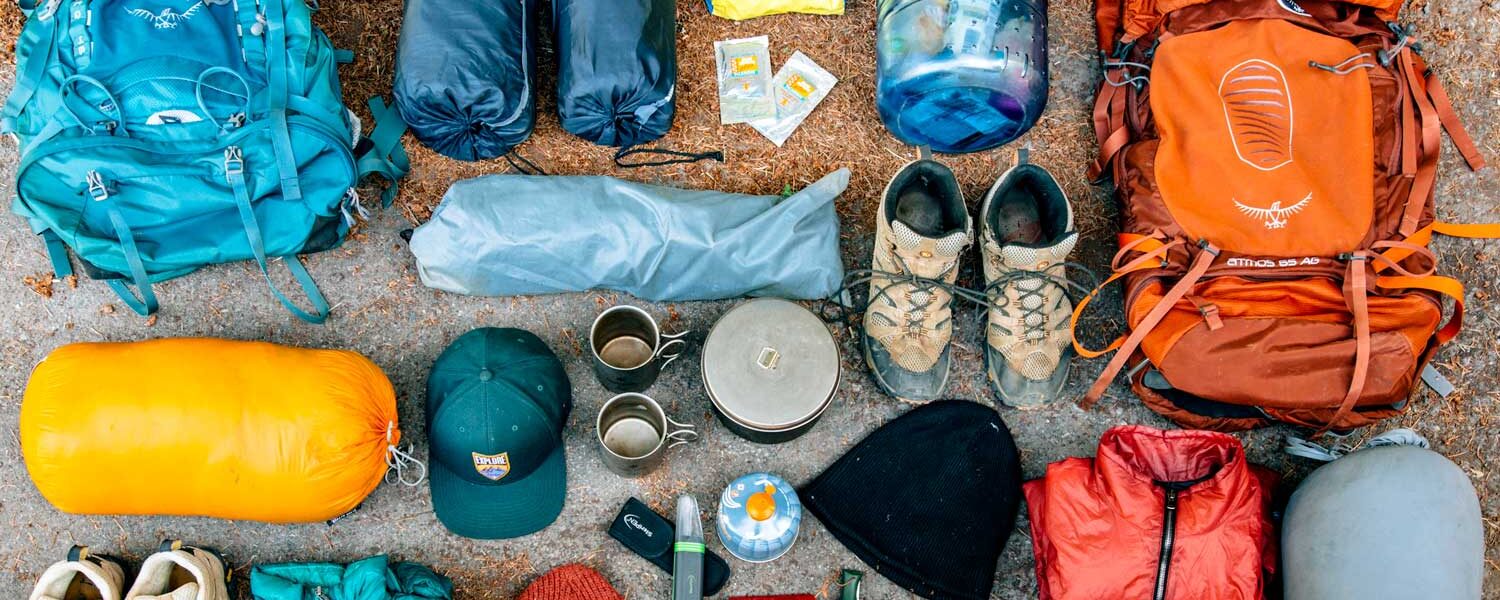
Permits, Guides, and Responsible Trekking
Trekking in Ladakh is not just about reaching a summit or crossing a high pass. It’s also about respecting the land, the people, and the fragile environment that makes this place so extraordinary. Whether you’re traveling independently or joining a guided expedition, it’s important to understand the permits required, the value of hiring local guides, and how to trek responsibly.
Permits: What You Need and Where to Get Them
Many trekking routes in Ladakh require an Inner Line Permit (ILP), especially those near international borders such as Nubra Valley, Pangong Lake, Tso Moriri, and the Changthang region. These permits are essential for both Indian and foreign nationals and are strictly enforced at military checkpoints.
For foreigners, certain areas like the Chadar Trek or routes near Hanle also require a group permit and must be arranged through a registered travel agency. The ILP can be obtained either online via the official Ladakh permit portal or in-person at the Tourist Information Center in Leh.
Most trekking circuits like Markha Valley or Sham Valley do not require ILPs if they remain within Leh district boundaries. However, always double-check with a local operator or the TIC before setting off, as policies can change yearly.
Why Hiring a Local Guide Matters
While some experienced trekkers prefer going solo, hiring a local guide offers numerous advantages. Not only do they know the terrain, weather patterns, and trail shortcuts, but they also bring invaluable cultural knowledge to your journey. A Ladakhi guide can help you communicate in remote villages, explain religious customs, and point out wildlife or plants you might otherwise overlook.
Most importantly, they add a layer of safety. In high-altitude, remote regions, knowing when to push forward or turn back can be life-saving. Many guides are also trained in basic first aid and AMS (Acute Mountain Sickness) response.
Hiring porters and cooks through local agencies also supports the region’s economy. Treks like Tso Moriri to Spiti or Snow Leopard Trek often rely on logistical support teams—your choice to hire locally directly benefits Ladakhi families and ensures sustainable tourism.
Trekking Responsibly: Leave No Trace, Give Back
Ladakh is one of the most ecologically fragile regions in the Himalayas. Its delicate high-altitude ecosystems can take decades to recover from human impact. As a visitor, you have a responsibility to protect this pristine environment.
- Carry out all trash, including biodegradable items.
- Use reusable water bottles and purification methods instead of plastic bottles.
- Respect local customs and sacred sites. Don’t photograph people or rituals without permission.
- Use dry toilets or established toilet areas—avoid polluting water sources.
- Stick to marked trails to minimize erosion and plant damage.
Responsible trekking is not a trend—it’s a necessity. As tourism increases in Ladakh, it’s crucial that we travel mindfully, leaving nothing behind but footprints and taking away only memories. The mountains give us everything—solitude, beauty, and perspective. Let’s give something back.
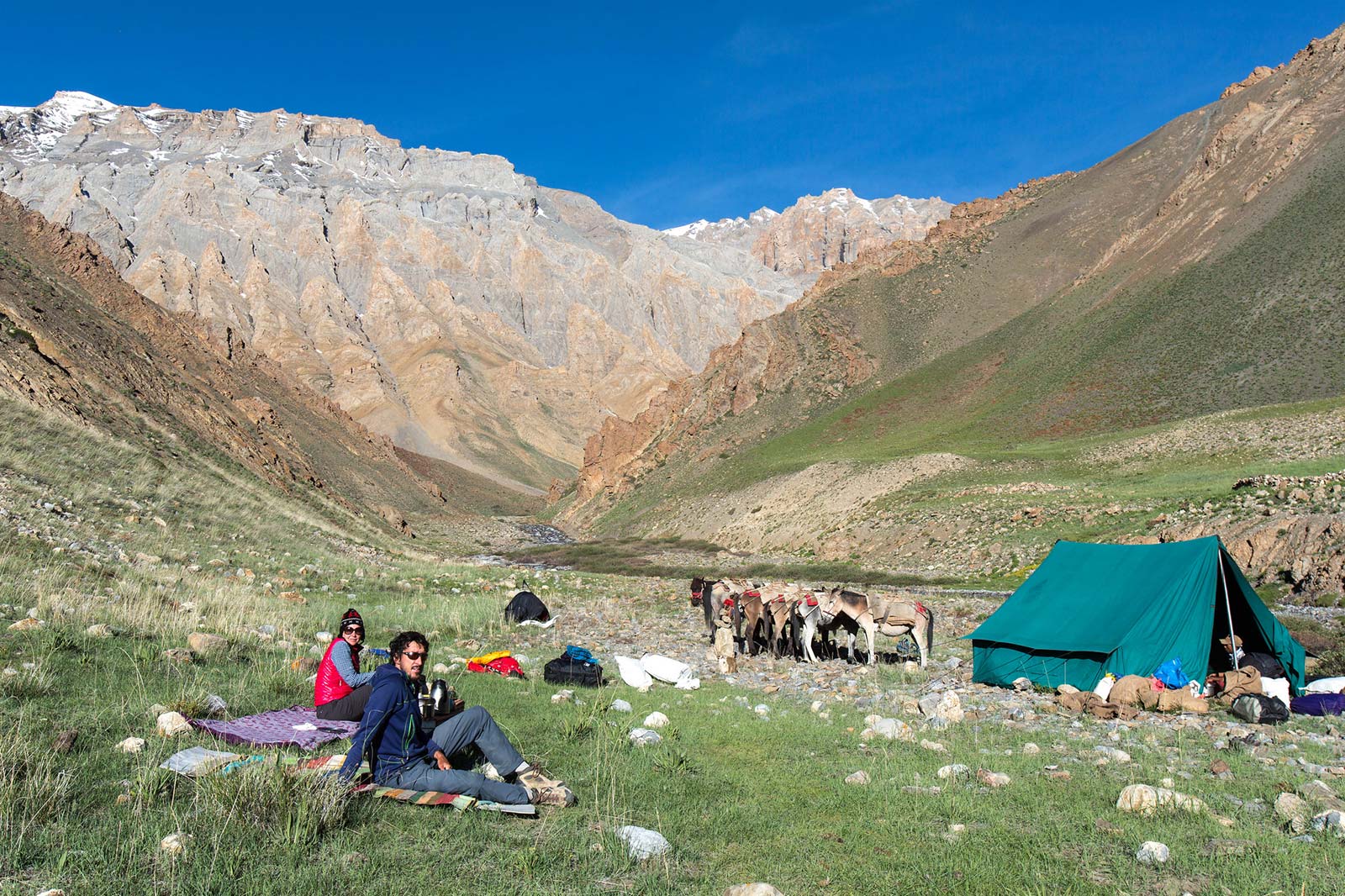
Frequently Asked Questions
Planning a trek in Ladakh often leads to a lot of practical questions—especially for first-time visitors. Below, we’ve compiled the most common queries to help you feel fully prepared for your journey across the high Himalayas.
What’s the best trek in Ladakh for beginners?
The Sham Valley Trek is widely considered the best introductory trek in Ladakh. With moderate walking hours, relatively low altitude (below 4,000 meters), and village homestays, it provides cultural immersion without physical strain. Another excellent option is the Lamayuru to Alchi Trek, ideal for those wanting a short yet scenic experience.
How can I prevent altitude sickness during my trek?
Altitude sickness, or AMS, is preventable with proper acclimatization. Spend at least 2 days in Leh (3,500m) before starting your trek. Stay hydrated, avoid alcohol, ascend gradually, and follow the “climb high, sleep low” rule. Many trekkers also carry Diamox (after consulting a doctor) to reduce AMS risk.
Can I trek in Ladakh without a guide?
Yes, solo trekking in Ladakh is possible on well-marked routes like Markha Valley and Sham Valley. However, for remote or high-altitude trails like Tso Moriri to Spiti or winter treks such as Chadar, hiring a guide is strongly recommended. A local guide not only ensures safety but also enhances your cultural and natural experience.
Do I need permits for all treks in Ladakh?
Not all treks require permits. Treks in the Leh region like Sham Valley and Markha Valley usually don’t need permits for Indian nationals. However, foreign tourists often need an Inner Line Permit (ILP) for restricted zones such as Nubra, Pangong, and Changthang. Routes near international borders always require ILPs and sometimes additional approvals through agencies.
When is the best time of year to trek in Ladakh?
The ideal trekking season is May to early October. Spring (May–June) offers pleasant temperatures and blooming landscapes. Summer (July–August) is peak season with full trail access. Autumn (September–October) is quieter with golden light and changing colors. The Chadar Trek is a rare exception, running in winter from mid-January to mid-February.
How much does a Ladakh trek cost?
Trekking costs vary depending on the route, duration, and whether you go independently or with a tour. Budget treks like Sham Valley can cost INR 5,000–8,000 for 3 days (homestay, food, local transport). Guided multi-day treks like Markha Valley typically range from INR 18,000 to 30,000. Expedition-style treks with gear, tents, porters, and guides can cost more.
Is there mobile signal and internet on the treks?
Most trekking routes in Ladakh have no mobile network, especially once you leave the Leh Valley. Some villages like Rumbak and Skiu may have intermittent signal (BSNL or Jio only), but you should be prepared for a full digital detox. Inform someone of your route and return date before departure.
Can I rent trekking equipment in Leh?
Yes, there are many shops in Leh that rent high-quality gear including sleeping bags, down jackets, tents, trekking poles, and crampons (for Chadar). It’s advisable to bring your own boots and base layers, but for shorter treks or budget travel, renting is a smart option.
Still have questions? Don’t hesitate to reach out to local trekking agencies or communities for the most current conditions and trail advice. Ladakh’s mountains may be remote, but the trekking community here is warm, helpful, and always ready to welcome you.

